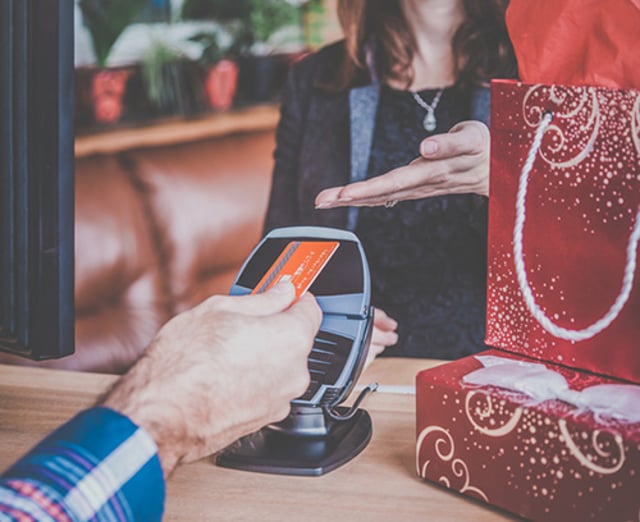Holiday retail tech: Four essential tips for pop-up store success
Every holiday season, retail chains like See's Candies significantly increase their store footprints by rolling out pop-ups and kiosks in malls and other locations, seemingly overnight.
Ensuring the best possible customer experience at every location requires careful planning months beforehand, and includes rolling out and equipping each of these temporary sites with the right technology. While the retail landscape changes all the time, there are some fundamentals for technology readiness that remain unchanged year after year.
Retailers and their managed service providers (MSPs) can set the stage for a successful holiday retail season with the following four tips.
- Lock down store holiday designs and features early: Each year, retailers tweak their holiday store designs to reflect current trends. Any changes to the store design and features require adjustments to the technologies deployed. As a crucial first step, operators should finalize their store designs and features so IT teams can map out the hardware and software needed at each site.
- Test and upgrade technologies: Seasoned retailers with a history of temporary holiday store expansions typically have existing "store-in-a-box" kits. MSPs store the kits during the off-season, reissuing and reconfiguring the equipment when the holidays approach, just like retailers do with holiday decorations.
But just as decorations may become outdated over time or require new designs or updated messages, holiday tech is no different. Retailers and their technology partners should test existing kit equipment to ensure its viability and consider adding or replacing components as necessary to support this season’s demands.
Justification for new equipment may include updated enterprise systems, new temporary store designs, an expanded workforce that calls for additional handheld devices, fixed POS stations, digital signage, and interactive kiosks. There may also be newer versions of each type of equipment to process transactions faster or more efficiently.
For example, at See’s Candies, recent changes to their store-in-a-box kits include updating all wide area network (WAN) edge devices to new hardware with advanced network capabilities and enhanced security features.
- Carry out essential network and security updates: Standing up new, temporary retail kiosks as an extension of brick-and-mortar stores is a daunting task under any circumstances. Doing so in a matter of weeks and getting those sites integrated into the existing business systems to operate seamlessly requires a robust, up-to-date network.
Not only does each temporary unit need a preconfigured network solution that's fully functional out of the box, but each year the equipment must be reconfigured and updated to integrate into the retailer's current business ecosystem. An expanded holiday workforce plays a factor as well. Temporary frontend workers need secure access to IT networks, devices, internal employee systems and training.
To support frontend operations, retailers may need to bolster their IT teams by hiring more help desk support, extending the existing team's hours or reassigning members on other IT projects.
As for security, the increase in locations, devices and data traffic means an expanded cyber-attack surface. The right network provides secure guest Internet access, protects increased traffic to and from the cloud, and safeguards POS transactions. It may also require expanding the POS security envelope, hardening it by including mobile pay and possibly even two-factor authentication.
- Integrate and troubleshoot omnichannel and third-party systems. Consumers in today's retail environment seek a flexible omnichannel shopping experience – one that allows them to browse and select a product online with the option to finalize a purchase or pick up their order in a store. Customers want cross-channel shopping experiences that are seamless across online, offline and partner interactions and which rely on the essential integration of associated network systems among all three environments.
Retailers should test and lockdown all order processing and fulfillment operations to ensure they support the desired customer experience across all channels.
Holiday tech checklist in action
Every year, the See's Candies team partners with Hughes as their MSP to configure, deploy and maintain up to 160 temporary sites – increasing See's footprint over 50% – during the holiday season. On the hardware side, the MSP verifies that each piece of existing and new network equipment is fully functional before integrating with in-store technology like POS devices, handhelds and displays.
The MSP then updates firewalls and routers with the latest software and configurations, grants temporary sites access to the retailer's core network and provisions new connectivity to each site. Once operational, Hughes monitors the network 24/7, optimizing performance and providing technical support throughout the holiday season.
At the end of the season, the MSP closes down each site, shuts down ports to prevent unauthorized use and packs the equipment away in storage until the next holiday season. For See’s, enlisting the support of Hughes ensures the network and equipment at each site are secure and seamlessly integrated into the core network year after year. It also provides a boost of support for the retailer's often stretched holiday IT team.
Most retail chains aim to complete their holiday tech checklist no later than mid-October, including final equipment selection, network integration and omnichannel testing across all temporary store units and channels. While retailers and technology partners may finetune their checklists over time, these four items – early planning, thorough testing, security and network updates, and omnichannel integration – will most certainly make the list, helping to ensure each temporary retail outpost thrives during the busy holiday season.












